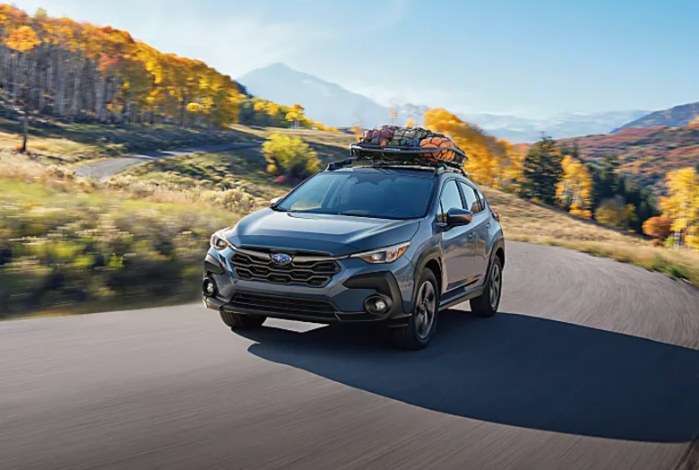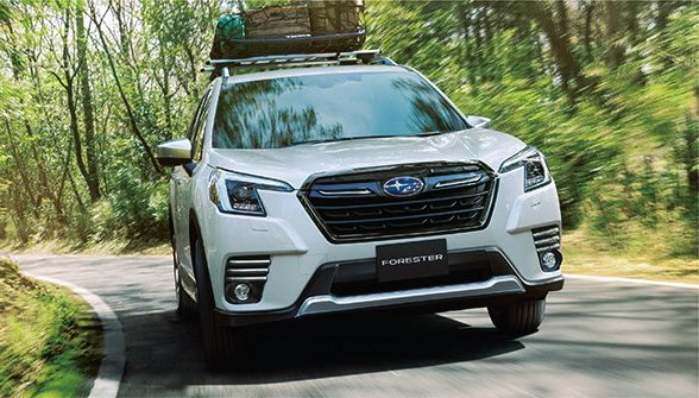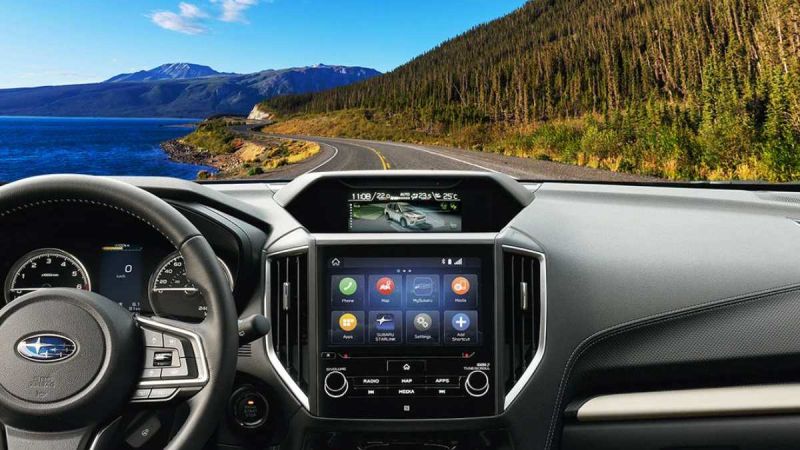What is Subaru's most fuel-efficient 2023 and 2024 model-year vehicle? Subaru's most fuel-efficient engine is the 2.5-liter Boxer engine in the 2024 Legacy midsize sedan. It gets an EPA-estimated 27/35 city/highway and 30 combined mpg.
The 2.0-liter Boxer engine in the all-new 2024 Impreza compact sedan is next. It gets an EPA-estimated 27/34 city/highway and 30 combined mpg. The 2.0-liter Boxer engine in the next-generation 2024 Crosstrek subcompact SUV is next. It gets an EPA-estimated 27/34 city/highway and 29 combined mpg.

The least fuel-efficient vehicle is its largest model, the 2023 Ascent. Ascent Limited, Touring, and Onyx Edition get 20/26 city/highway and 22 combined mpg. Check out the complete Subaru lineup fuel efficiency report here. Read 10 Tips to Get the Most out of a Tank of Gas from Consumer Reports for more gas-saving advice.
11 ways to improve your Subaru fuel mileage on and off-road
Weight is not your friend.
You can improve your fuel efficiency in the Subaru Forester, Subaru Outback, or Subaru Crosstrek by taking just what you need for your camping, hiking, or biking trip to the mountains. Reducing the weight of your vehicle by as little as 100 lbs could result in a fuel economy improvement of between one to two percent. So, if you plan on going on a road trip or Overlanding excursion, take only the necessary gear and save money.

Remove your rooftop carrier.
If you regularly carry gear on your Subaru roof racks while off-roading, remember to remove it when you return home.
Leaving a rooftop carrier or rooftop tent on top of your all-wheel-drive vehicle creates unnecessary aerodynamic drag (or wind resistance) when you're not using it. Depending on where you're driving and the speed you're traveling, going with bulky items on the rooftop carrier can increase fuel consumption by up to 25 percent (increasing the faster you drive).
Roof vs. trailer hitch bike rack
Consumer Reports studied roof vs. trailer hitch bike racks, and here's the data. CR measured how different bike racks, when empty and when loaded with two adult-sized bicycles, affected the fuel economy of a small SUV going 65 mph.
The SUV was less affected by either rack type, but the hitch was still the winner. With a roof rack and two mountain bikes, there was a 19 percent reduction in fuel mileage and 5 percent less when empty.
With a hitch rack carrying the same two bikes, the SUV had a 12 percent reduction in fuel mileage and 2 percent less when empty. A hitch rack is also easier to remove than a top rack which CR says will help encourage you to take it off when you don't need it and save fuel.
Drive sensibly
Aggressive acceleration and braking can increase your fuel consumption by up to 30 percent. It's better to drive at a constant speed in the fast lane than slow and jerky in the slow lane. You will improve your mileage if you don't have to slow down to allow cars to merge.
Use the Subaru adaptive cruise control.
When driving on the highway, use the vehicle's cruise control as this will help maintain a constant speed without sudden fuel-sucking fluctuations in speed. Use your Subaru adaptive cruise control. To keep a safe distance from the car in front of you, choose the distance you want to preserve, and EyeSight will automatically adjust your speed to maintain your selected distance.
Speed matters
It's common sense that the faster you drive, the more fuel you will use. When you move to the fast lane, keep it at the posted speed limit or keep up with traffic speed. There's nothing more irritating than someone driving slow in the fast lane. Choose the middle or far right lanes if you want to go slower.
Talking tires
Those big all-terrain tires hurt fuel mileage. A good set of winter/mud and snow-rated tires will be sufficient if you do no severe off-roading. You can read our review of tires here.
Ensure your vehicle's tires are inflated according to the manufacturer's recommendation. The importance of properly inflated tires goes beyond reducing rolling resistance and improving fuel efficiency: it's also about vehicle safety. With over-inflated tires, you risk reduced grip and increased wear. Similarly, with underinflated tires, you'll increase the rolling resistance, which means your vehicle will work harder to travel at the same speed and use more fuel.
Get Your Subaru to the service department before your road trip.
Make sure you keep your Subaru vehicle regularly serviced. During each service, your dealership will run your car through several checks, picking up faulty sensors that can lead to increased fuel use. Fixing a faulty oxygen sensor could improve your vehicle's fuel efficiency by about 40 percent.
Using the wrong engine oil in your vehicle can affect fuel consumption by up to two percent. Get your oil changed and change your engine air filter. Both will contribute to getting the best performance from your Subaru Boxer engine.
Combine your trips
How often have you run to the grocery store or Home Depot, returned home, and then realized you needed to return because you forgot something? Those little trips will make you use more fuel than a longer drive at a consistent speed. So, list everything you need to get and check them off as you go.
Three things that don't work
1. Most fuel additives do not improve fuel efficiency
You will hear claims that fuel additives will improve fuel mileage. Most additives that you buy off the shelf will not improve fuel efficiency. Some professional products are sold at the dealer to clean your fuel injectors do work. Save your money on something other than additives from the auto parts store.
2. You don't need premium gasoline
You don't need expensive 91-octane gasoline. If you drive a Forester, Outback, Crosstrek, Ascent, Impreza, or Legacy, your vehicle is designed to run on 87-octane or regular gasoline, and you don't need expensive premium fuel.
3. Cold weather tips
Starting your car when it's cold and leaving it running with the heater on means you'll burn much more fuel. Your vehicle's engine will warm up quicker when driven, improving the heater's performance and reducing fuel consumption.
The 2023 Subaru Forester compact SUV, 2023 Outback midsize SUV, 2024 Impreza compact hatch, 2024 Crosstrek subcompact SUV, and 2023 Ascent 3-Row SUV are fuel-efficient. Still, these twelve tips will help improve your overall fuel mileage this summer.
You Might Also Like: The Complete Fuel Guide For Your Subaru And How To Save Hundreds Per Year
Denis Flierl has invested over 30 years in the automotive industry in a consulting role working with every major car brand. He is an accredited member of the Rocky Mountain Automotive Press. Check out Subaru Report, where he covers all of the Japanese automaker's models. More stories can be found on the Torque News Subaru page. Follow Denis on Facebook, Twitter, and Instagram.
Subaru Report - We’ve got you covered! Check back tomorrow for more unique, informative SUBARU news, reviews, and previews you can trust.
Leave your comments below, share the article with friends, and tweet it out to your followers!
Photo credit: Subaru













Comments
Ethanol free gasoline or 100%
Permalink
Ethanol free gasoline or 100% gas will noticeably improve your gas mileage. It’s more efficient than gas with alcohol(ethenaol) additives. 100% gas is more expensive.. in the end your car will thank you for using it
While its true that warming
Permalink
While its true that warming up a vehicle consumes more gas it is well worth it. Nobody wants to be uncomfortable in their car. Also in cold climates with ice\snow running the heat\defrost for a few minutes before trying to clean off the car makes it much easier and less likely you will break something like the wipers or windshield itself which is a know weak point on Subarus. And above all, Subaru boxer engines are very well known for having oiling issues. The #1 thing that kills these engines is poor lubrication. You cant just jump in start it and go in a subaru. Even at low rpm in the cold, they just dont do well until the oil warms up some. NEVER bring a Subaru engine over 3k rpm before the oil temp is at least 140, but preferably over 170. Many people ignore this simple rule then complain about the boxers being unreliable.
The writer didn't read the
Permalink
The writer didn't read the manual concerning cold starts.
You should NOT start the engine cold and immediately drive. The blue coolant temperature light must be OFF before proceeding.
Also, octane rating absolutely effects fuel economy. The choice is dependent on engine compression ratio. The higher the ratio, the higher the octane demand.
Why, then, does the manufacturer say to use 87 (in an engine with 10:1 ratio? Simply explained: they are appealing to the consumer that doesn't want to pay a higher price for gasoline. Todays modern engines utilize a sensor (erroneously called a knock sensor because if you have and engine knock, you have a serious mechanical problem.) It should be called a ping sensor because the ECM is programmed with a matrix to ID this and will seamlessly adjust by doing two things, both of which kills your fuel economy: retards the ignition AND enriches the fuel ratio long enough for the ping to subside. The driver doesn't notice the changes.
100% gasoline plus the CORRECT octane fuel for your engine's compression is the best and most economical way. Test it yourself and see!